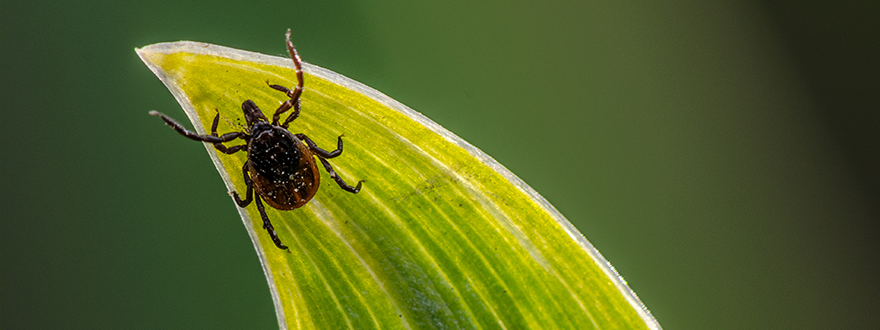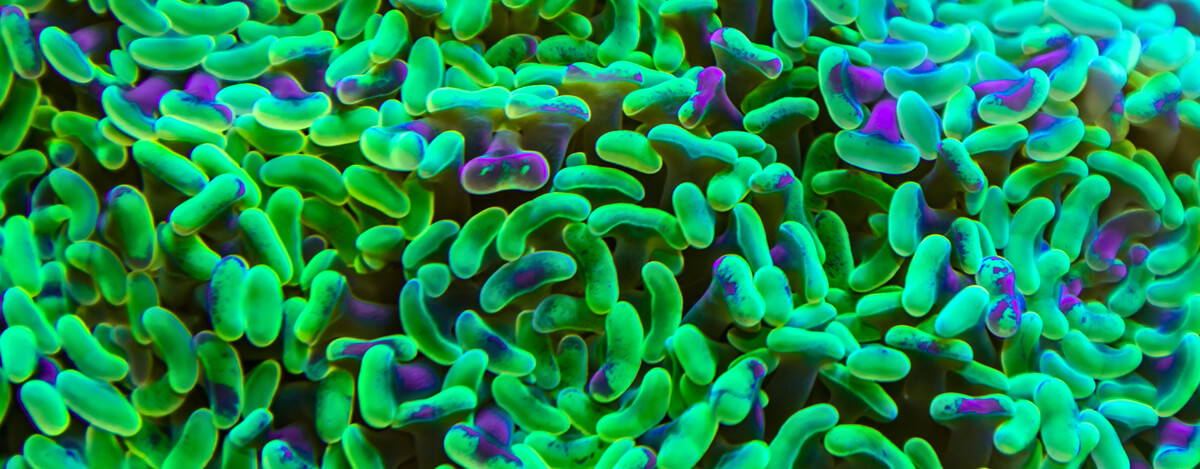
read time: 4 min
Health & Wellness
In 2022, on the heels of the global COVID-19 pandemic, came another highly contagious disease sending people running for the hand sanitizer. Monkeypox—now renamed mpox by the World Health Organization (WHO)1—is an ominous sounding disease with itchy blisters that look even worse. But does it really come from monkeys? And how does it infect humans?
How do we get mpox and other animal diseases?
Mpox came about through a zoonotic transmission, which is the scientific way of saying animal-to-human transmission. And it’s a pretty common way for people to contract certain diseases typically thought to be confined to animals.
Here’s how it happens: Humans have a number of cells that share similarities with animals.2 Every cell in our body has what are known as receptors that interact with proteins called antigens that act like a lock and key.3 In certain cases, as with mpox, when the virus antigen (key) receptor matches the receptor (lock) of a human cell, the virus can open the lock and get inside.
Once inside, the virus infects the host cells, replicates in cells found throughout the body, and humans get mpox.
What diseases can we catch from animals?
Turns out animal-to-human transmission is pretty common. People catch a number of common illnesses this way—including diseases like like rabies, Ebola, hantavirus, and many others. But some have origins that might surprise you.
Let’s use the flu as an example. Scientists believe influenza originally came from a combination of pigs and bird cell viruses4 (remember the avian flu outbreak in 2008 and the swine flu outbreak in 2009?). Today, of course, it’s heavily spread through human contact and respiratory droplets, but new flu strains can originate from animals.4
Another common disease we’re all intimately familiar with now, COVID-19 (or rather the coronavirus that causes it), is thought to have its origin in bats.5
Toxoplasmosis, which is actually a parasite, can be contracted by humans through cat feces.6 Hence the warning for pregnant women to let someone else clean the litter box.
Does mpox even come from monkeys?
Let’s get back to mpox. Interesting fact: it’s believed that the first worldwide human mpox case occurred in Central Africa in the 1970s.7 However, the virus was first discovered 2 decades earlier when monkeys in a research laboratory in Denmark were infected during an outbreak. That case inspired its name, but the natural reservoirs where this virus lives and reproduces are actually African rodents—monkeys are likely only accidental hosts.
The first case of mpox in the United States was in 2003 in Wisconsin and stemmed from a new pet prairie dog that was unknowingly housed with infected Gambian rats imported from Africa.8 And while the original case came from animal hosts, the disease now spreads through human-to-human contact. This fascinating history led to the 2022 name change from monkeypox to mpox, which helps cut the connection to monkeys when talking about the disease.
Why is animal-to-human transmission becoming more common?
Between COVID-19’s bat origins and mpox’s prairie dogs and rats, it seems like we’re hearing about animal-to-human transmission more and more frequently. Two important factors enabling such transmission are climate change and deforestation.9 We often think of these two activities as raising global temperatures and causing sea levels to rise, but they’re also responsible for displacing animals from their homes, which can play a big role in spreading animal-to-human diseases.
Because of climate change and deforestation, animals and insects are being forced out of their habitats and into places more populated by humans.9 These animals and insects carry diseases less common to humans. Humans are also driving deeper into previously uninhabited areas. Now that we’re living in closer proximity with animals, there’s a higher chance for humans to be infected for the first time while new viruses and parasites are mutating to unlock and invade our cells.
Bats in particular carry all kinds of diseases. Some species of bats live deep within forests. And again, thanks to deforestation, humans are cutting down the trees these bats call home. They’re then forced to fly to more inhabited areas and are infecting humans with their previously animal-only viruses.9
How does climate change figure into all this? By jacking up the planet’s average temperatures, it plays a role in the rise of human infection as well. In fact, from deep within now-melting glacial ice in China, scientists have uncovered more than 30 viruses, including some from animal hosts, that date back 15,000 years.10 What’s more, rising global temperatures are also fueling a migration of ticks and mosquitos to new areas, where they continue to spread disease.11
How do we stop these zoonotic diseases?
The question should be, can we stop them? Most likely not. Given the momentum of climate change, and given that people can travel halfway across the world in a day, global outbreaks of new diseases present a real threat to society.
That’s not to say mpox will become a pandemic, or that animal-to-human diseases will run amok. But global initiatives to slow climate change, reduce deforestation, and develop new vaccines could also help slow the spread of animal-borne disease.
References
1 WHO recommends new name for monkeypox disease.
World Health Organization. Published November 28, 2022. Accessed December 5, 2022. https://www.who.int/news/item/28-11-2022-who-recommends-new-name-for-monkeypox-disease
2 Tarazona, Ariel M., Ceballos, Maria C., Broom, Donald M. Human relationships with domestic and other animals: one health, one welfare, one biology. National Library of Medicine. doi: 10.3390/ani10010043
3 CAR T-cell therapy and its side effects.
American Cancer Society. Accessed October 31, 2022.. https://www.cancer.org/treatment/treatments-and-side-effects/treatment-types/immunotherapy/car-t-cell1.html
4 Runstadler, Jonathan. Influenza's wild origins in the animals around us. Scientific American, republished from The Conversation US. Published March 11, 2018. Accessed October 31, 2022. https://www.scientificamerican.com/article/influenzas-wild-origins-in-the-animals-around-us/
5 Temmam, S., Vongphayloth, K., Baquero, E. et al. Bat coronaviruses related to SARS-CoV-2 and infectious for human cells. Nature. 2022;604:330-3336. doi:10.1038/s41586-022-04532-4
6 Toxoplasmosis.
Mayo Clinic. Published online. Accessed October 31, 2022. https://www.mayoclinic.org/diseases-conditions/toxoplasmosis/symptoms-causes/syc-20356249
7 What is monkeypox?
Centers for Disease Control and Prevention. Updated July 22, 2022. Accessed October 31, 2022. https://www.cdc.gov/poxvirus/monkeypox/about/index.html
8 Past U.S. cases and outbreaks.
Centers for Disease Control and Prevention. Published and updated June 6, 2022. Accessed October 31, 2022.
https://www.cdc.gov/poxvirus/monkeypox/outbreak/us-outbreaks.html
9 Robbins, Jim. How forest loss is leading to a rise in human disease. YaleEnvironment360 website. Published February 23, 2016. Accessed October 31, 2022.. https://e360.yale.edu/features/how_forest_loss_is_leading_to_a_rise_in_human_disease_malaria_zika_climate_change
10 Zhong, ZP, Tian, F, Roux, S et al. Glacier ice archives nearly 15,000-year-old microbes and phages. Microbiome 9, 160 (2021). doi:10.1186/s40168-021-0116-w
11 Starolis MW, Perez O, Powell EA. Clinical features and laboratory diagnosis of emerging arthropod-transmitted viruses: A report from the pan American society for clinical virology clinical practice committee. J Clin Virol. 2020 Nov;132:104651. doi: 10.1016/j.jcv.2020.104651.










